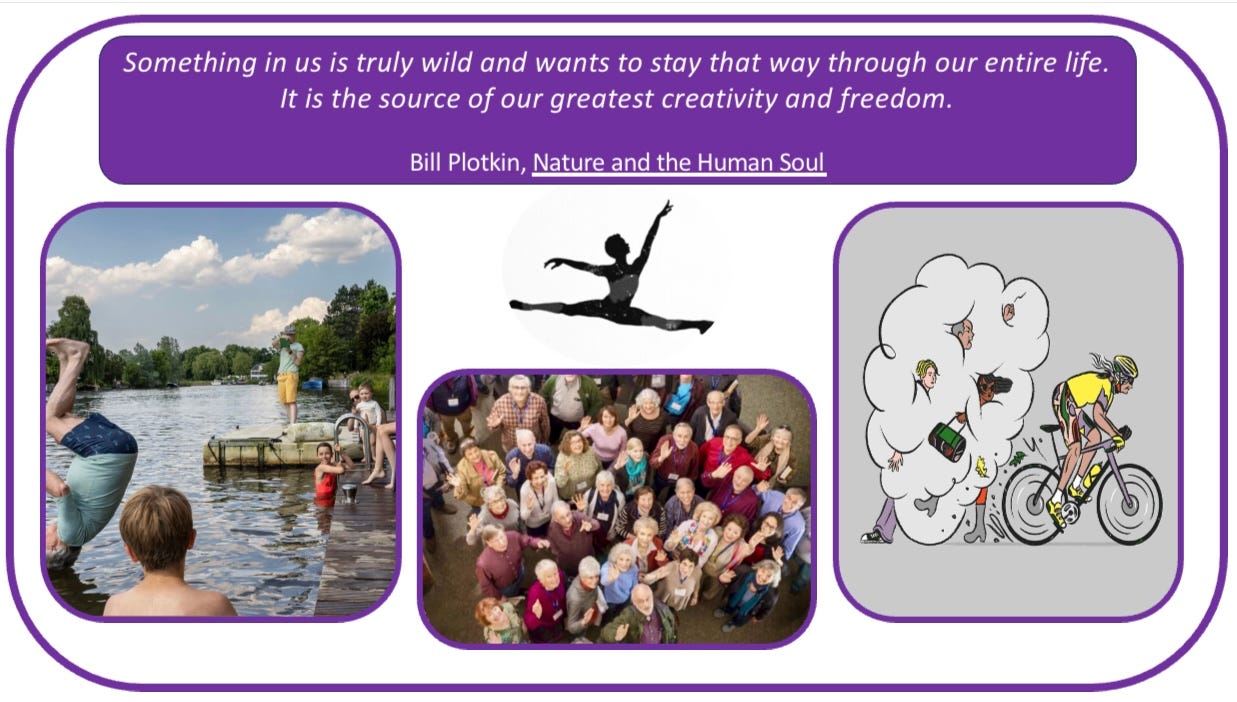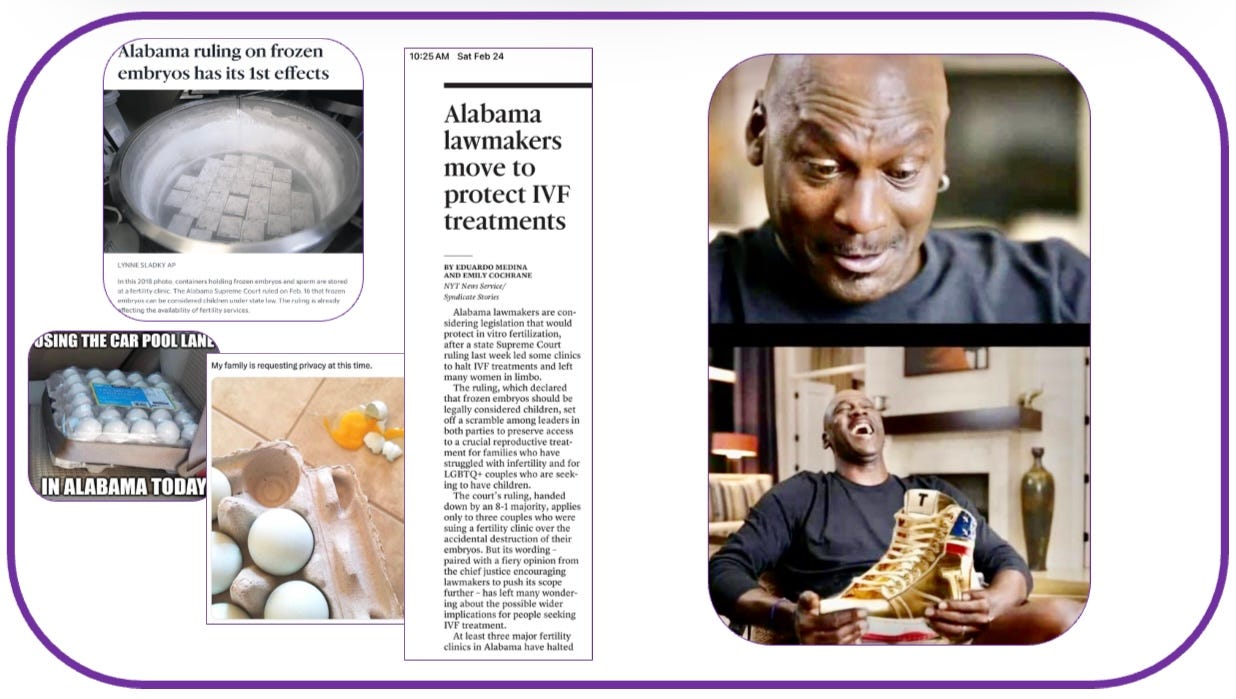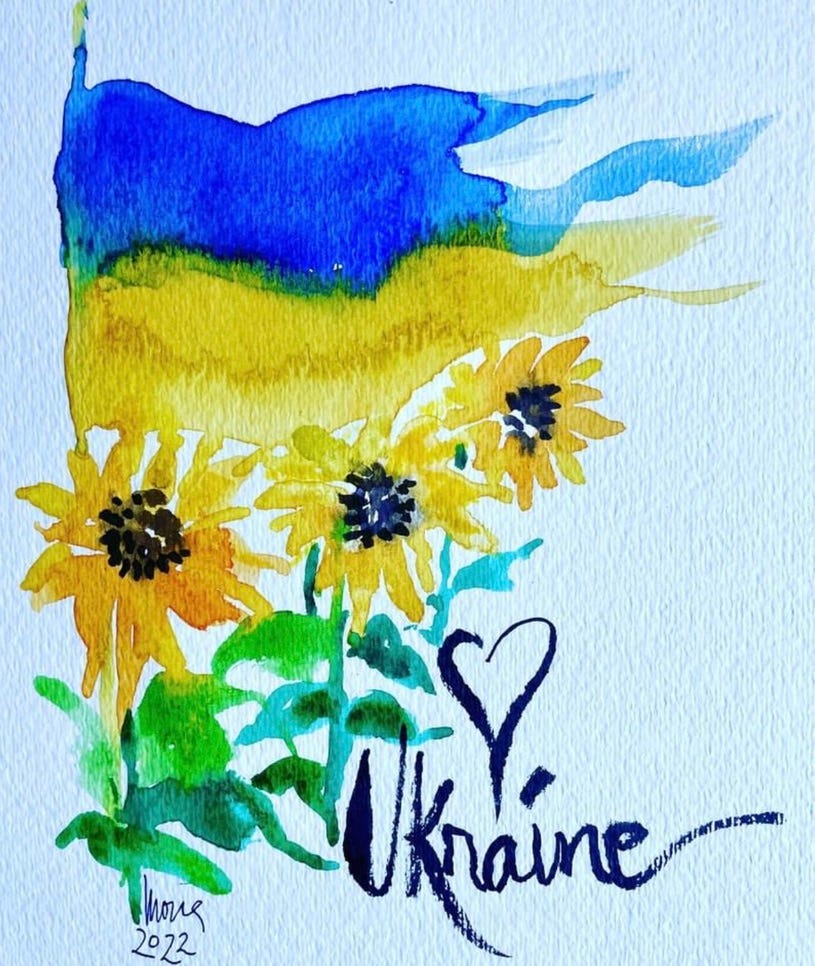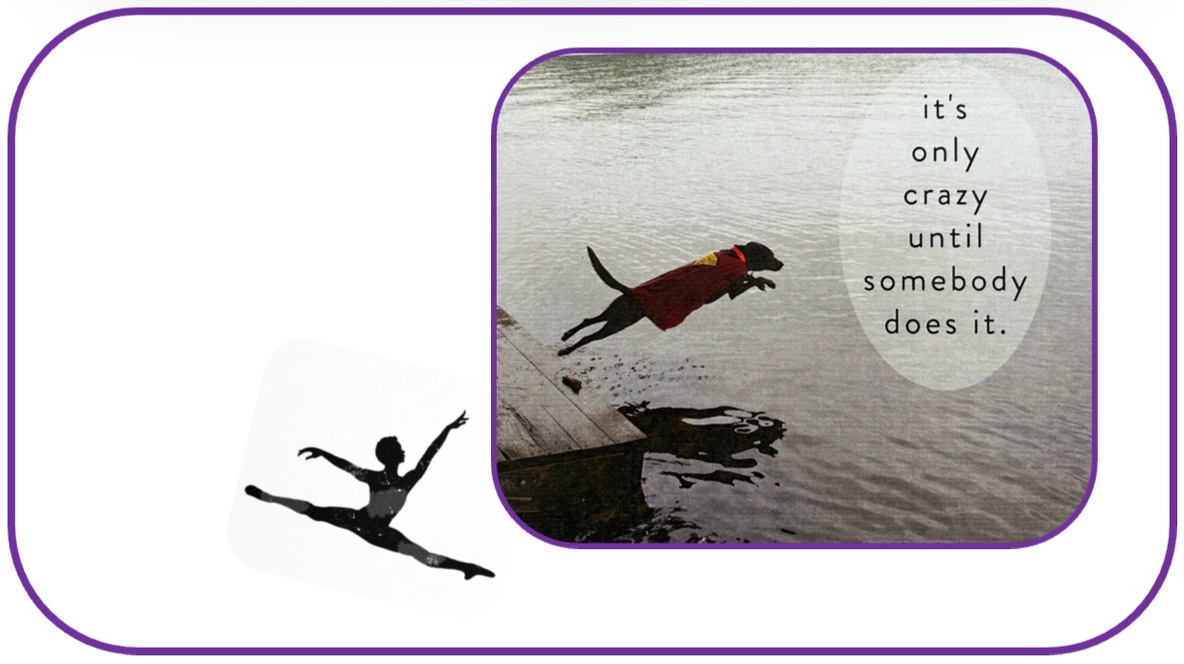Warm Leap-Year greetings for the February 29 “extra day” on Thursday.
Leap Year is aptly named to suggest things transformative, the extra-ordinary, the wild — in our news, our individual life-narratives, and within ourselves.
For newShrink, it’s been time for an edition more focused on issues and stories (as illustrated here) with significance from depth/soul-psychological, neurological and mental-health/clinical perspectives.
You may recall that depth psychologies — particularly Jung’s — are very much psychologies of a maturing, creative, individuating adulthood throughout our life cycle. Almost by definition Jung’s is a psychology of aging consciously, intentionally.
So it shouldn’t have been surprising that themes, topics and opportunities such as research on super-aging, programs, strategies and trends in lifelong learning and community-building keep finding me!
And yet some of today’s topic, timing and even the title did surprise — and synchronistically, in ways I’ll describe as they’ve occurred to me.
first, news
A very few notes are in order to acknowledge a couple of the week’s high-profile stories.
Sometimes the factual story is such that the only suitable comment to be mustered is some combination of eye-roll and dark humor. That was the case with these two.
Starting above at top left:
Following the Alabama Supreme Court’s explosive frozen embryos are legally people ruling this week, The Associated Press provides here a factual, party-neutral discussion of the issues and immediate dramatic impacts in accessible Q&A form:
What’s next after the Alabama ruling that counts IVF embryos as children?
Predictably, the move and attempts by politicians to react to it have brought a barrage of comedic backlash in news outlets, as late-night TV fare, and in memes and commentary across social media of every kind. (Pictured are two favorites.)
Additionally there has been much deer-in-headlights effort — including and especially by publicly outspoken conservative Christians — to grapple quickly with what should have been clear consequences of some of their devoutly held positions. More than a few high-level national GOP lawmakers this week have revealed vividly that, regarding the most basic science of their own species’ reproduction, they themselves are — to put it in the most appropriate clinical terms possible — dumb as dirt.
The politics of the ruling began to sink in far beyond Alabama, and in a major election year. By Saturday morning per the 10:25 am NYT post pictured above, “Alabama lawmakers move to protect IVF treatments,” the massive Republican back-pedaling scramble was well under way:
“Alabama lawmakers are considering legislation that would protect in vitro fertilization, after a state Supreme Court ruling last week led some clinics to halt IF treatments and left many women in limbo.
The ruling, which declared that frozen embryos should be legally considered children, set off a scramble among leaders in both parties to preserve access to a crucial reproductive treatment for families who have struggled with infertility and for LGBTQ+ couples who are seeking to have children…”
This weekend I so wished for a comic headline-take on this, of the sort my former newspaper colleague, friend and reader Lew Powell might write. Something along the lines of,
“Ohhhh, not those human embryos! We thought you meant the other ones…”
These guys don’t ask for a lot.
They only want to have their Handmaids, and win their votes, too…
And (above at right) among the week’s inevitably vast array of comic takes on the Donald Trump gilded-MAGA-sneaker launch, for me none could top the M-J one here.
Shifting to a deadly serious and somber note…
🔵
Saturday, February 24, marks the second anniversary of the invasion of democratic U.S. ally Ukraine by Russian dictator Vladimir Putin’s military.
Today the milestone is all the more daunting, amid Trump-urged waning support for Ukraine among Congressional Republicans in today’s fractured election-year politics. Friday evening’s PBS News Hour week-review observes the occasion with good discussion of the current situation. (Both video and text transcript are embedded here.)
Brooks and Capehart on U.S. aid for Ukraine wavering on partisan battle lines (PBS News Hour)
🔵
on initiated grownups, conscious adulthood…
This is follow-up on recent newShrink discussion and massive public debate and discussion of aging — particularly President Joe Biden’s — in a high-stakes likely election face-off between two decidedly elder candidates just a few years apart in age.
Here from a New York Times guest columnist is one of the best things I’ve read covering normal vs pathological functioning, in a way that’s relevant and readily applicable to both Biden and presumptive opponent Donald Trump.
I’m a Neuroscientist. We’re Thinking About Biden’s Memory and Age in the Wrong Way.
The following two stories, from a comprehensive AARP exploration into research and narrative accounts from so-called super-agers have piqued my interest since their publication back in late fall. It was around the time of my somewhat super-ager-mother’s death at age 95, after her extremely high functioning well past 90.
BRAIN HEALTH RESOURCE CENTER
Celebrating What's Right With Aging: Inside the Minds of Super Agers (AARP Bulletin cover story)
Some people in their 80s and 90s show shockingly little decline in their brainpower. Scientists are beginning to understand what makes them different and how the rest of us might benefit.
7 Super Secrets of the Super Agers (AARP Bulletin)
My mother’s wasn’t the only super-ager tendency in my family of origin. Her older sister, their mother, grandmother and aunt had similar-patterned trajectories.
On the paternal side, as far back as 1982 when he died at nearly 101, my dad’s father was a bona fide super-ager — much studied by researchers, interviewed and written about by journalists, vibrantly healthy and sharp until just a couple of months before he died.
But long before and somehow beyond any of them something here has intrigued me. I’m sure I wasn’t the only, but was surely the only 16- or 17-year-old I knew routinely keeping dream journals and utterly captivated reading Jung’s ideas and psychology of aging grownups!
I should note here that I think it's not possible, useful or constructive for anyone to attempt to self-identify or somehow aspire to some ideal super-ager-hood. My best understanding, from all findings and studies thus far, is the characteristics and trends are on a spectrum or continuum, not boxes to be checked-off, and that many causes and effects in us complex humans are over-determined. There are research findings and data that suggest things that can enhance quality and joy in life and health. As with developmental patterns at the beginnings of life, I think the patterns and results are important and real, but aren’t predictive.
A charming photo-essay (pictured at left above) is a worldwide sampling of brief interviews on conscious, creative aging/individuation with snapshots of similar-aged elders around the world. It’s an installment of a periodic series featured in The Guardian,
‘I feel so young, so full of life’: being 72 around the world – photo essay.
This very recent first-person piece captures a bit of today’s title themes of transformative leaps and engaging with our innate wildness.
My Mother Got on a Bike. It Changed Her Life. (New York Times)
closer to home
All of these stories examining initiated, individuating adulthood have resonance for me, as that’s the core research and application focus for both my MA thesis and PhD dissertation, and foundational for my 15+ years as a depth psychologist and clinician. The idea that this is a vital creative process, engaging both conscious and unconscious parts of ourselves, is so central that my incorporated practice is Signet Creative, PLLC.
Reflecting on these themes closer to home this week, as mentioned previously, focus of this Lenten season is completion of settling my mother’s affairs — and stuff! — while clarifying what’s next in present and future. Its a culling-and-curating process I have called weaving-it-back-to-presentand-forward, like a tapestry.
As part of the what’s next in near and far future aspect, you might recall recent previous mentions of pinning down multiple long-range applications and wait-lists in Charlotte. These are to ensure future continuing-care retirement community options, as needs, circumstances (and readiness to leave the lake) dictate.
As the baby-boomer generation begins to age through the demographic python, this process begins to look and feel a lot like thinking years ahead for college — and making sure to have several back-up-schools! If you’re exploring and considering options along these lines I would love to have you share your tips and experiences.
Here more lake-living years are planned as spouse John is thriving, working from home at the lake or traveling as desired in high-demand/high autonomy, “post-career-career”— and grand Miz E is at prime age range for lake-fun visits along with her parents. Meanwhile for me, lovely as the lake is for family-and-houseguest-friend recreational time, by education, professionally/vocationally and otherwise, now that it’s again possible I need far more non-virtual engagement — and doing meaningful work in community that’s at least somewhat likeminded. (I already retired once years ago; it didn’t take!)
As I’ve pulled-back from the clinical treatment and health insurance panels etc. aspects of practice, I hope to re-start and expand more of the life-choice-planning, dreamwork, coaching, teaching and study group aspects. NewShrink is evolving with the increased time and energy, too.
So that search for the right, close-to-center-city part-time-visit/getaway place to rent or buy is still under way as well. In these transitions any common experiences and all of your ideas, tips and caveats are most welcome!
Amid all of these things, on rather parallel paths this week, something uncannily fitting for me arrived quite by synchronistic chance. It is in short-trip-away Asheville, where I have closest of longtime friends, affinity for the Yoga and Jungian communities there… and a short hop from home of grand Miz E, son and daughter-in-law!
Here’s what showed up this week, pictured at bottom center in the lede illustration above:
meet OLLI!
“The Osher Lifelong Learning Institute at UNC Asheville (formerly the North Carolina Center for Creative Retirement) is an award-winning, internationally-acclaimed learning community dedicated to promoting lifelong learning, leadership, community service, and research. We opened our doors in 1988 as a department of the University of North Carolina at Asheville. Our goal is to enable our members to thrive in life’s second half.
OLLI at UNC Asheville (OLLI) embraces a comprehensive array of programs in the arts and humanities, professionals’ career specialty areas, the natural world, civic engagement, wellness, life transition and retirement relocation planning…”
This website and organization are multi-faceted, well-organized and by many accounts deeply engaged in many aspects of Asheville as part of UNC-Asheville. It’s hard to believe I’d never heard of this; the website reads a little like parts of my dissertation. Just after Easter I’m enrolled in a half-day immersion in getting started with teaching and small learning groups there.
So, maybe that close-in-like-minded-city-community getaway place needs to be in AVL, dogs and me there more during weekdays and some hometown adventures with Miz E…. and there’s lure of the lake for all on weekends.
Now, about today’s title, a synchronistic anniversary gave me the shivers. It was Friday, well into the week’s planning and writing — except without a title that felt right — that I looked up and discovered the exact date of the 2022 Ukraine invasion by Russia was February 24. That was also the date of my oral defense of my dissertation to complete my PhD — incredibly, 10 years ago Saturday. It’s a date that has spookily recurred in a couple of other ways and contexts.
The complete title and content of my dissertation were strikingly relevant to today’s entire newShrink, which was already mostly done. The dissertation title is quite a mouthful, as is characteristic of both Jungian and more general academic traditions!
Blood in the Water: Tracking the Wild Grownup in America’s Lust for the Tarnished Hero.
Depth Psychology in Dialogue with the Journalism of Popular Culture.
(The subtitle signaled very early foundations of newShrink. )
🔵
Considering these many elements of this Lenten week’s process, I have used the image of culling, curating and weaving elements of past, present and future forward like the title image of Tapestry a couple of weeks back. This week’s experience has been different, a little less linear, more dynamic and three-dimensional. With it a different set of images showed up — of one continuous, trial-and-error experiment, all starting with my vases that are literally test-tubes.
It feels more like
trial-basis “weaving” (and living)…
It looks more like this:
🔵
Before closing today I leave you a few notes on leaps of faith and of other sorts.
Here are some Leap Year facts and traditions.
Some of my favorite collected ideas and quotes about leaps of all sorts are linked here in newShrink “New Year’s Postcards 1.1.22”. The quotes include:
From Coach Yogi Berra:
“When you come to a fork in the road, take it.”
From mythologist Joseph Campbell.
“A bit of advice given to a Native American at the time of his initiation: As you go the way of life, you will see a great chasm. Jump. It is not as wide as you think.”
From depth psychologist James Hillman
“Sooner or later something seems to call us onto a particular path, this is what I must do, this is what I’ve got to have, this is who I am…“ And yet, “You don’t know what you’re going to get into when you follow your bliss.”
And from novelist F. Scott Fitzgerald’s The Great Gatsby, description of title character/protagonist Jay Gatsby by narrator Nick Carraway
“If personality is an unbroken series of successful gestures, there was something gorgeous about him, some heightened sensitivity to the promises of life, as if he were related to one of those intricate machines that can register earthquakes ten thousand miles away. This responsiveness had nothing to do with the flabby impressionability which is dignified under the name of ‘creative temperament’ —it was an extraordinary gift for hope, a romantic readiness such as I have never found in any other person and it is not likely I shall ever find again. No—Gatsby turned out all right in the end…”
And, that is all I have! Talk to you next week.
🦋💙 tish
•🌀🔵🔷🦋💙
… it is important that awake people be awake,
or a breaking line may discourage them back to sleep;
the signals we give — yes or no, or maybe —
should be clear: the darkness around us is deep.
— William Stafford, “A Ritual to Read to Each Other”








